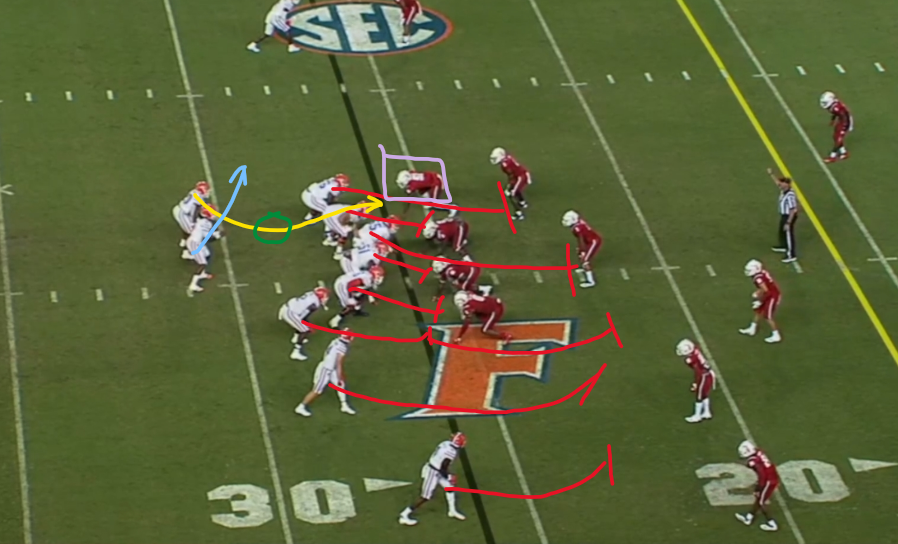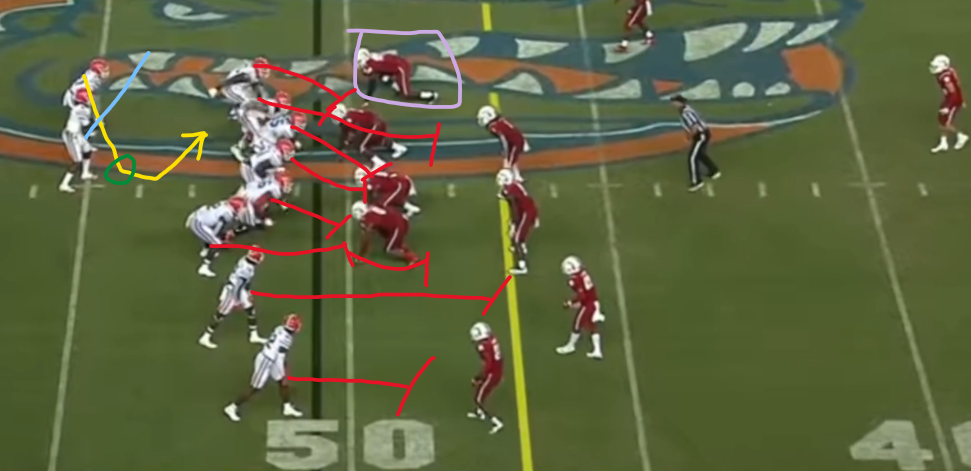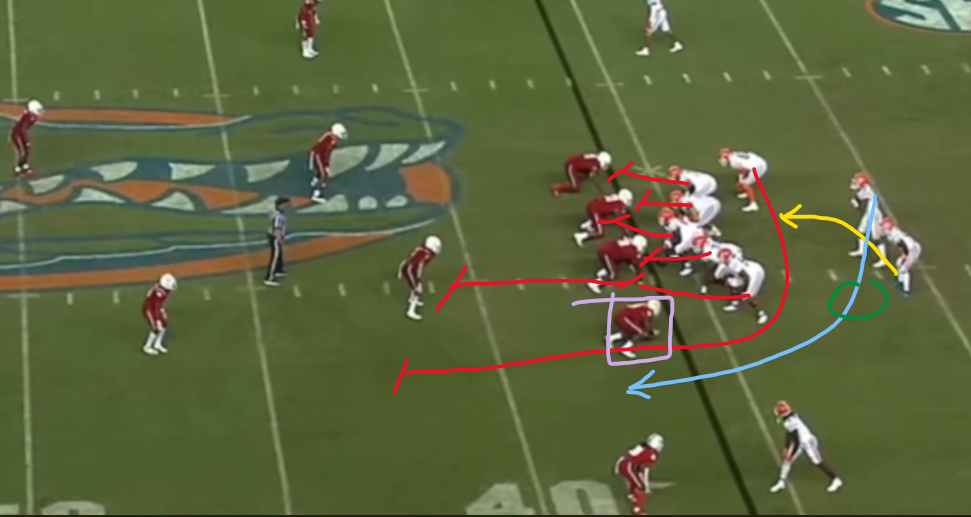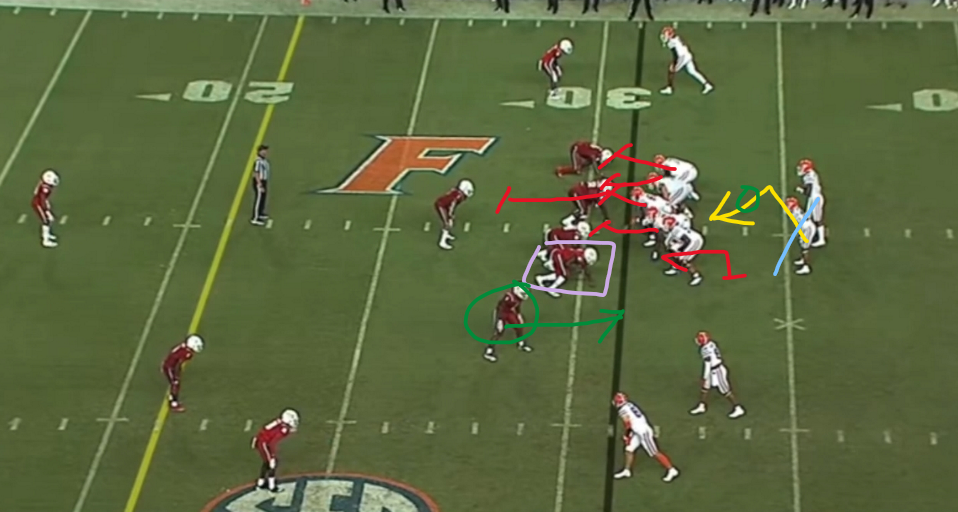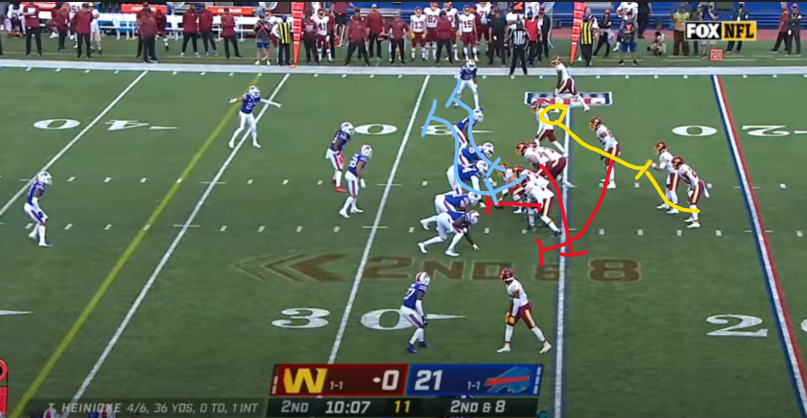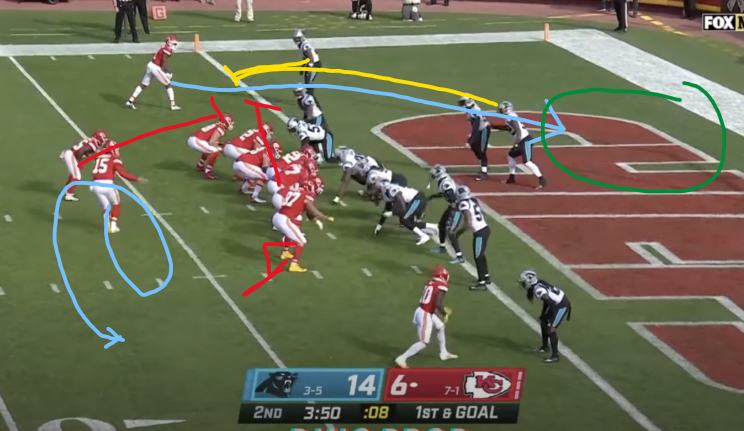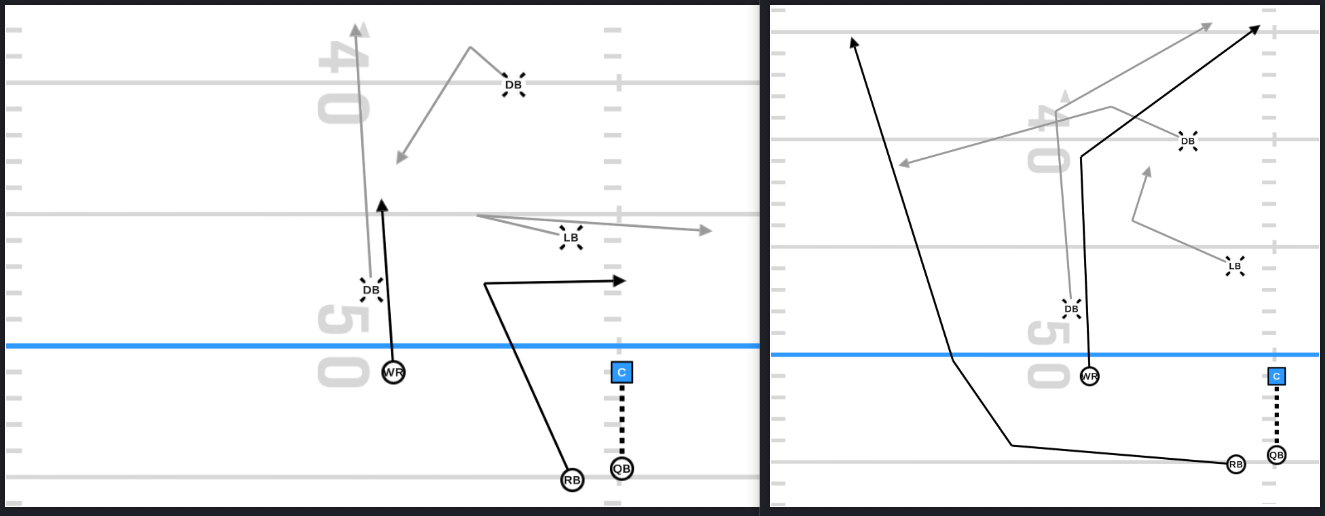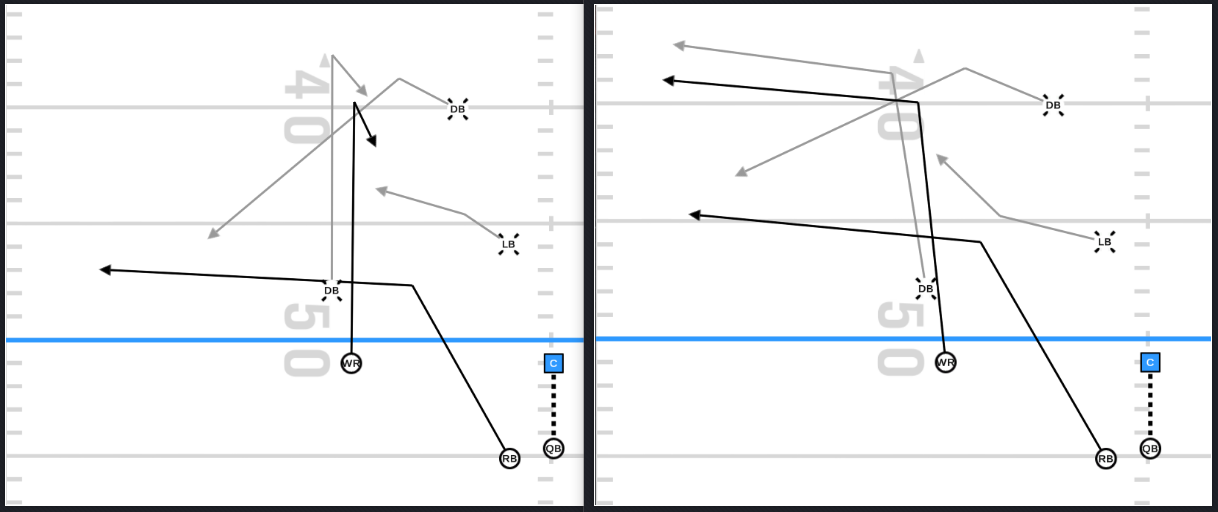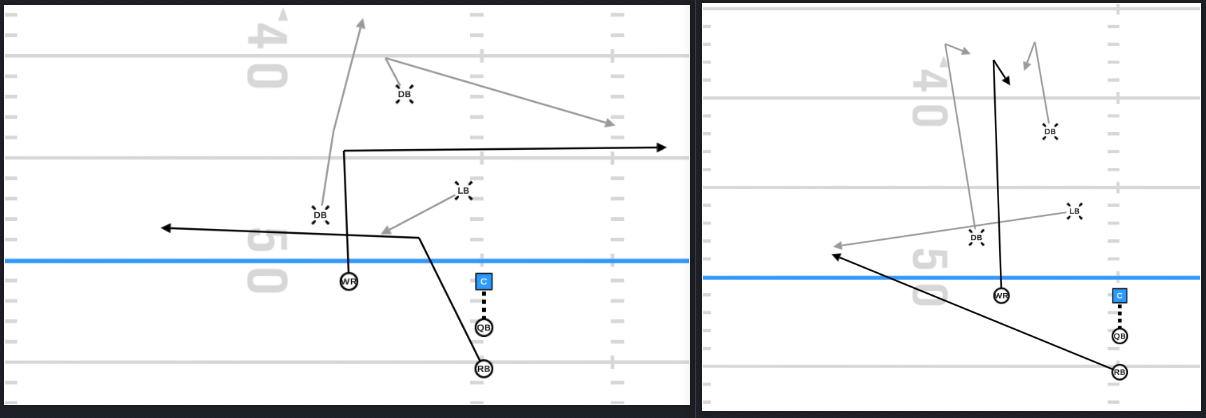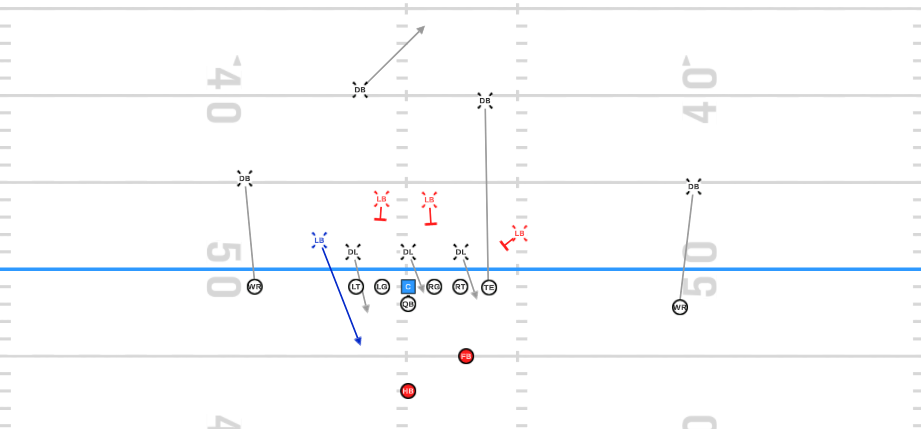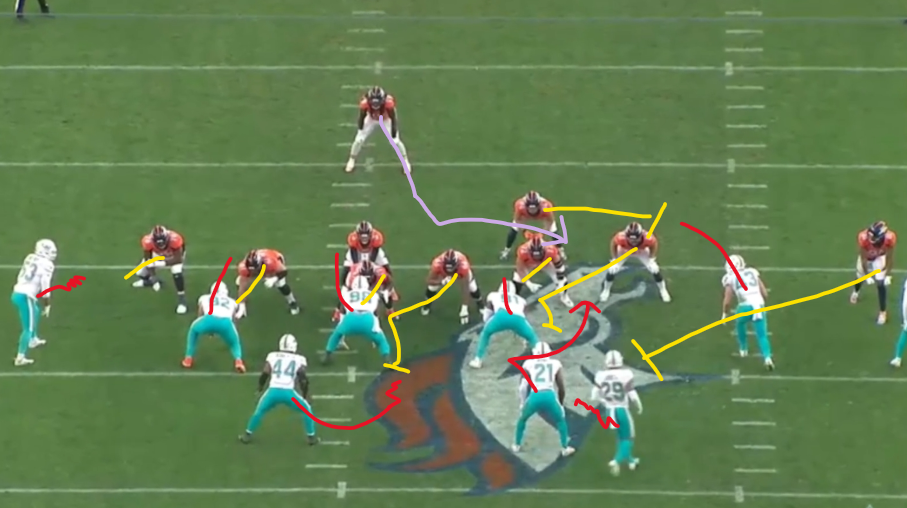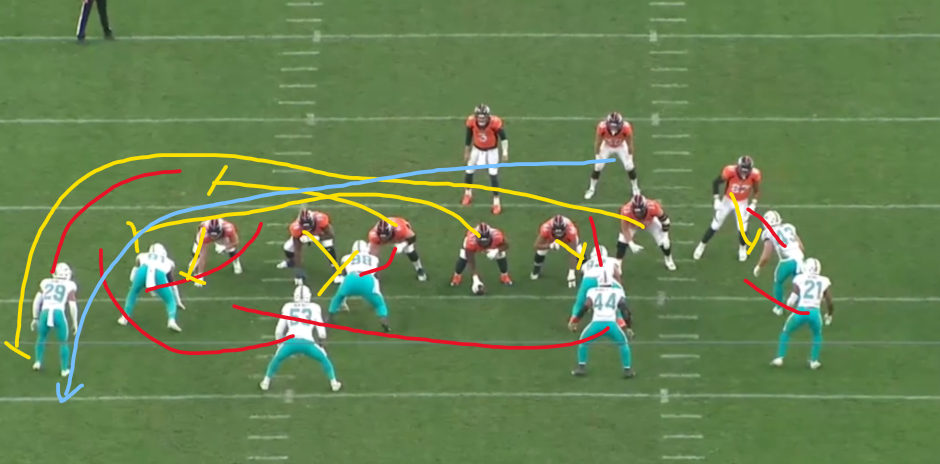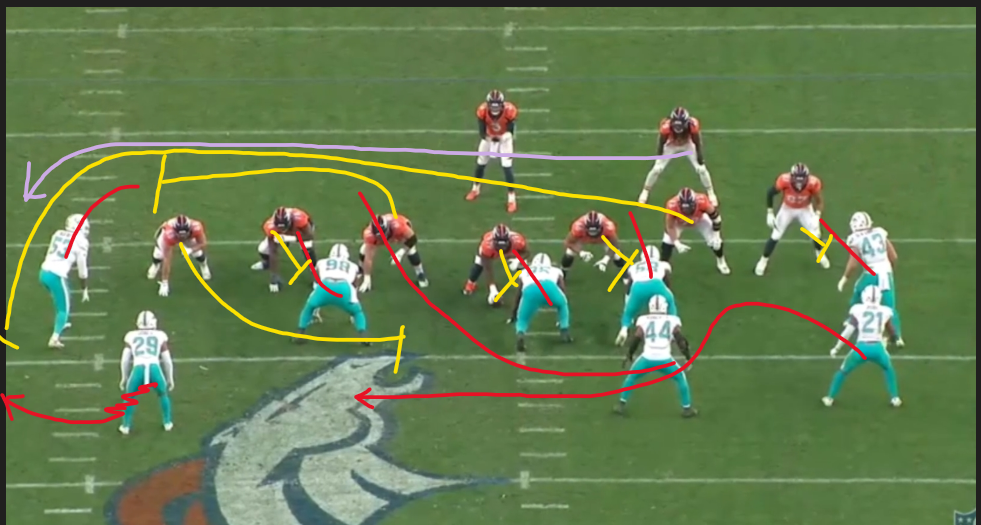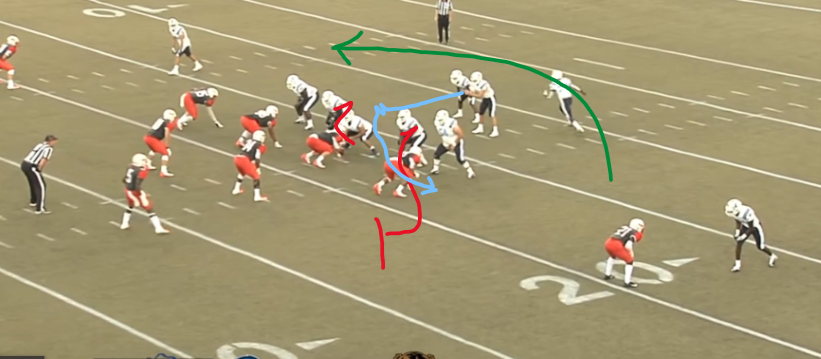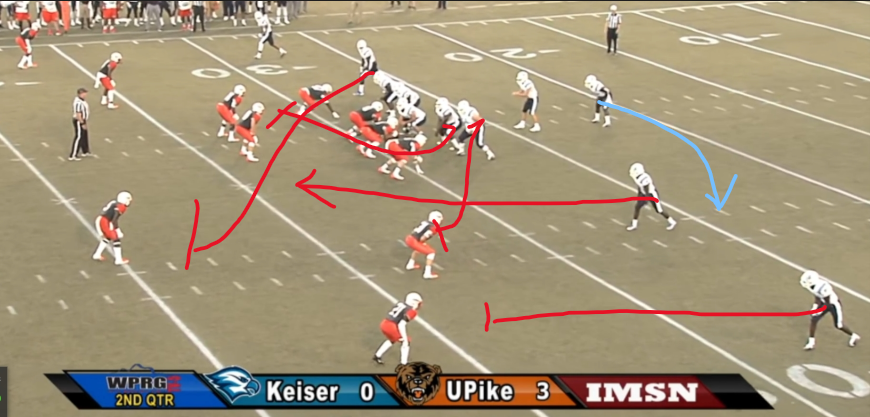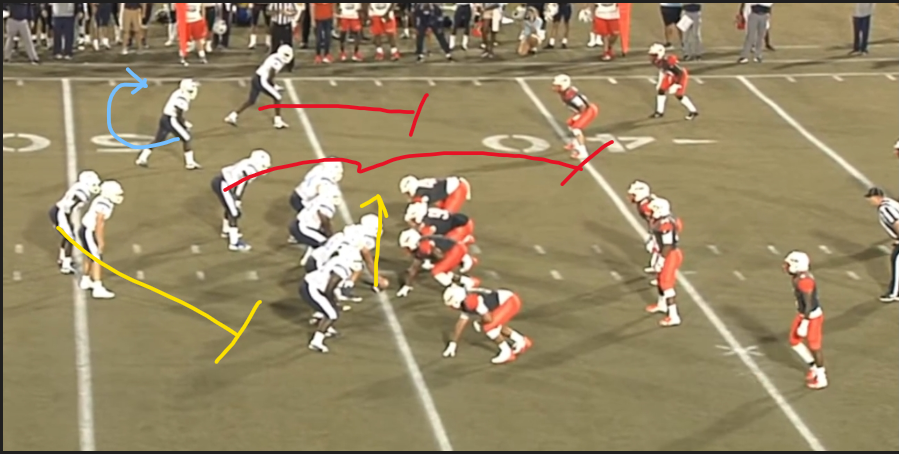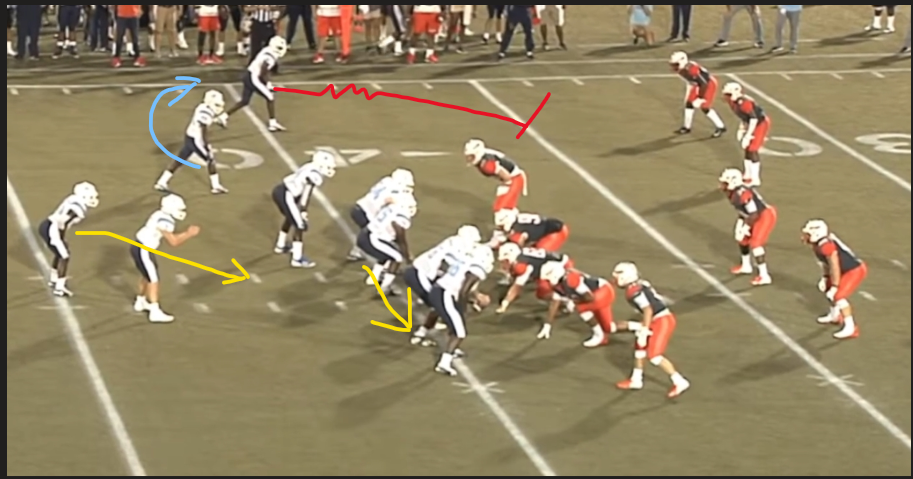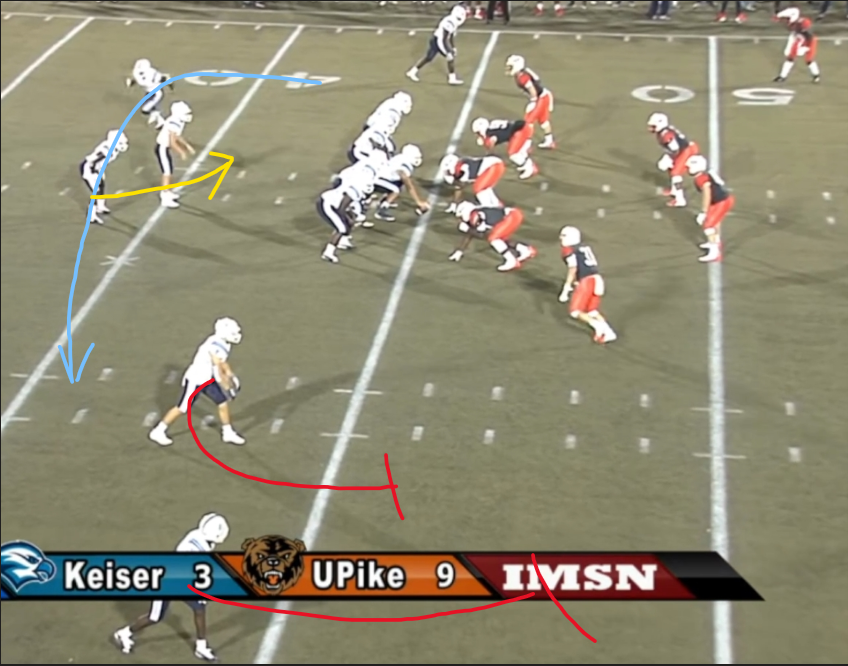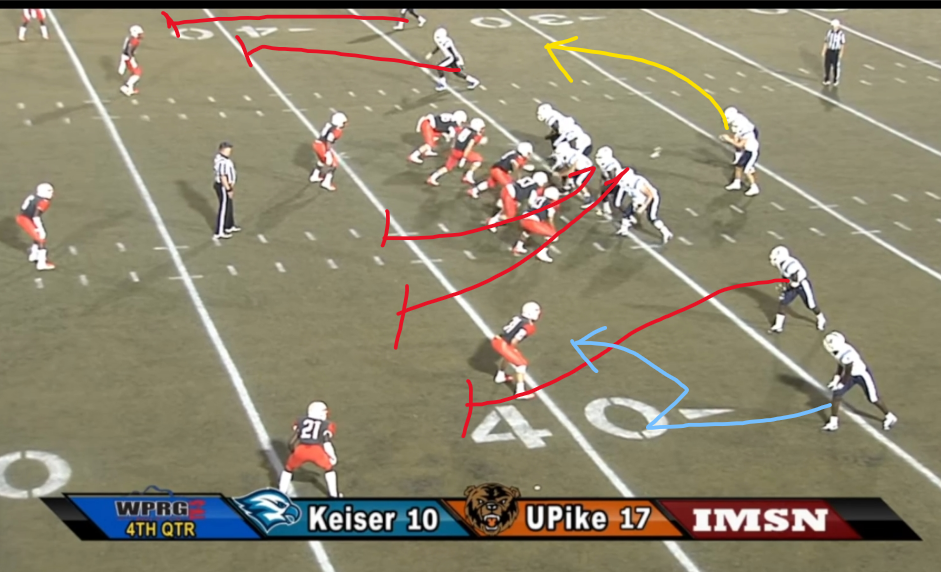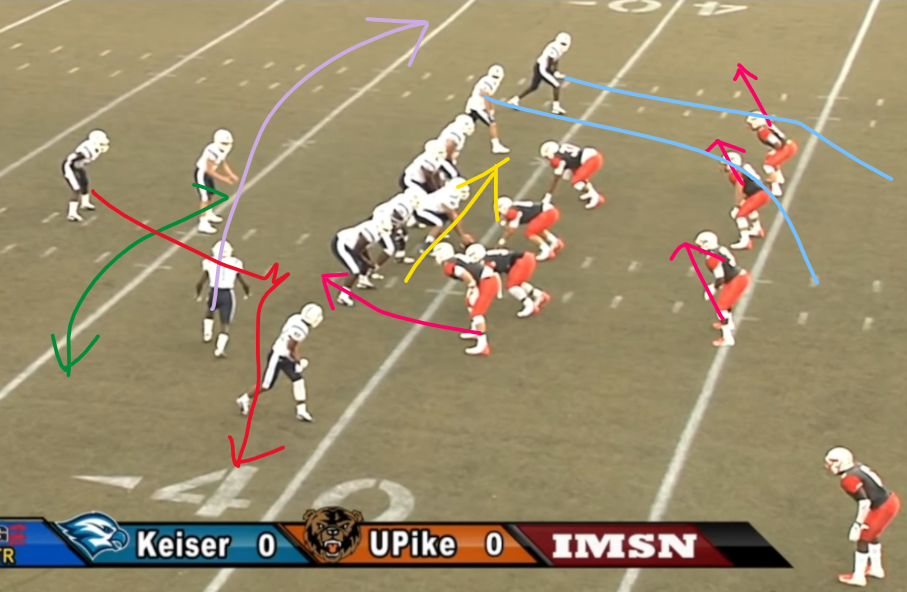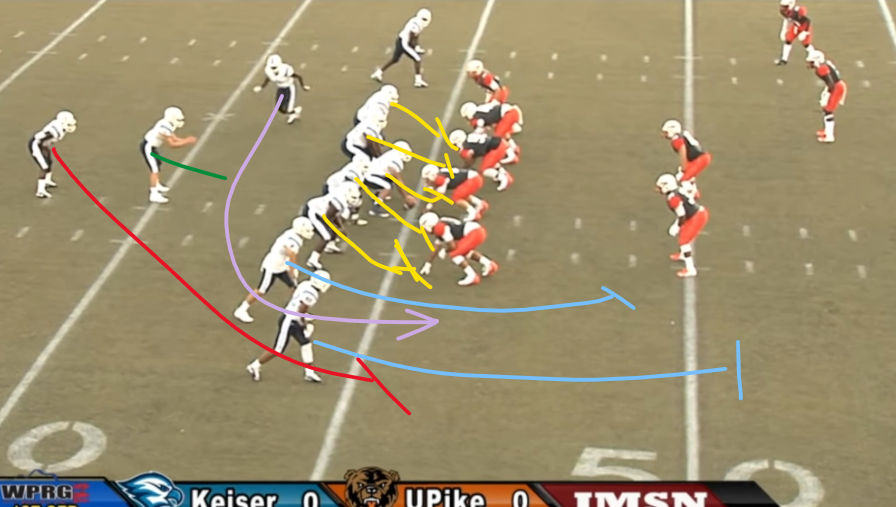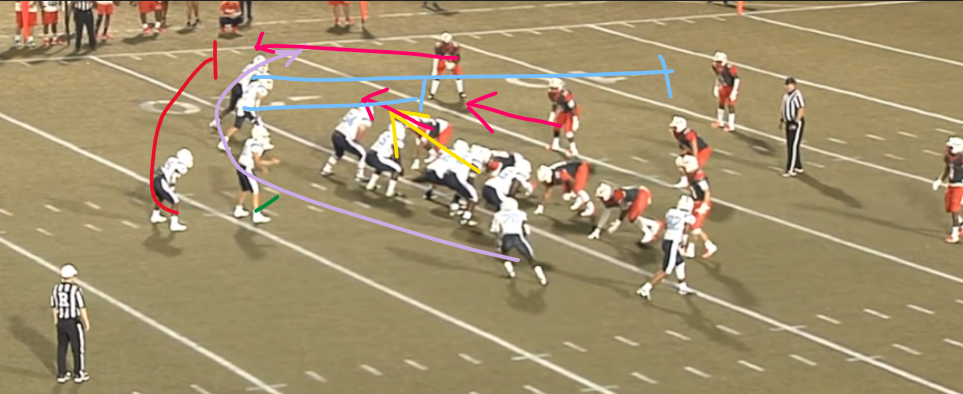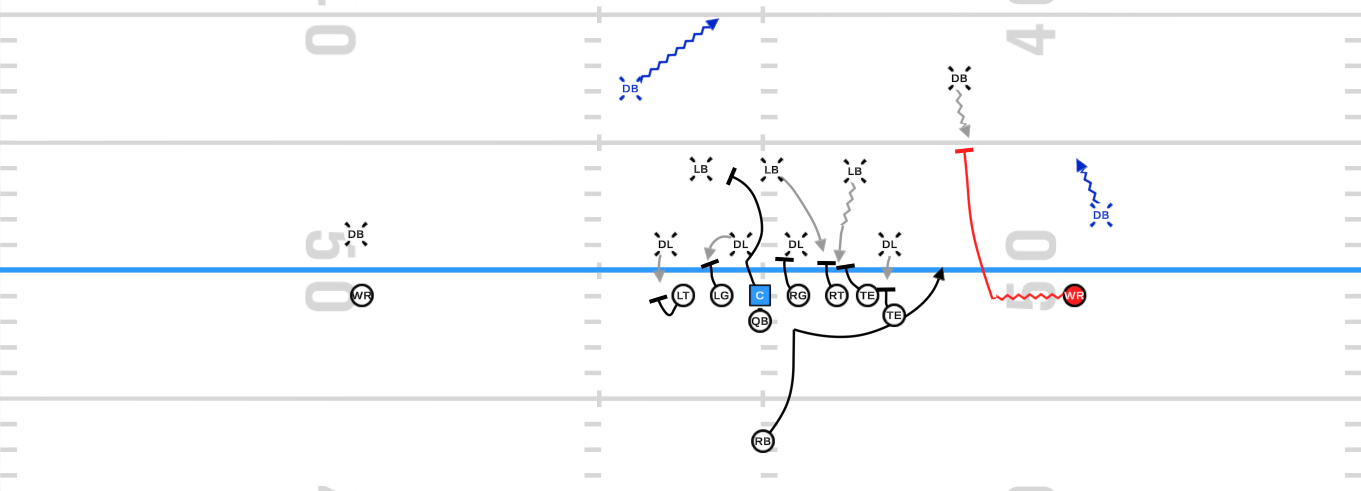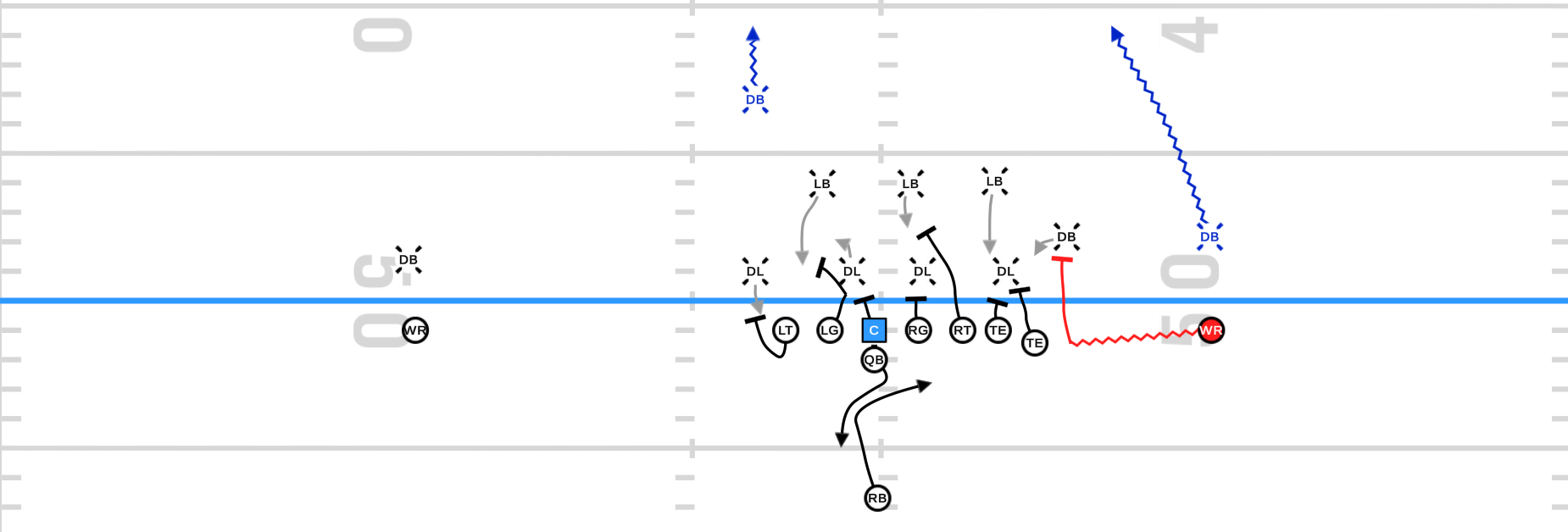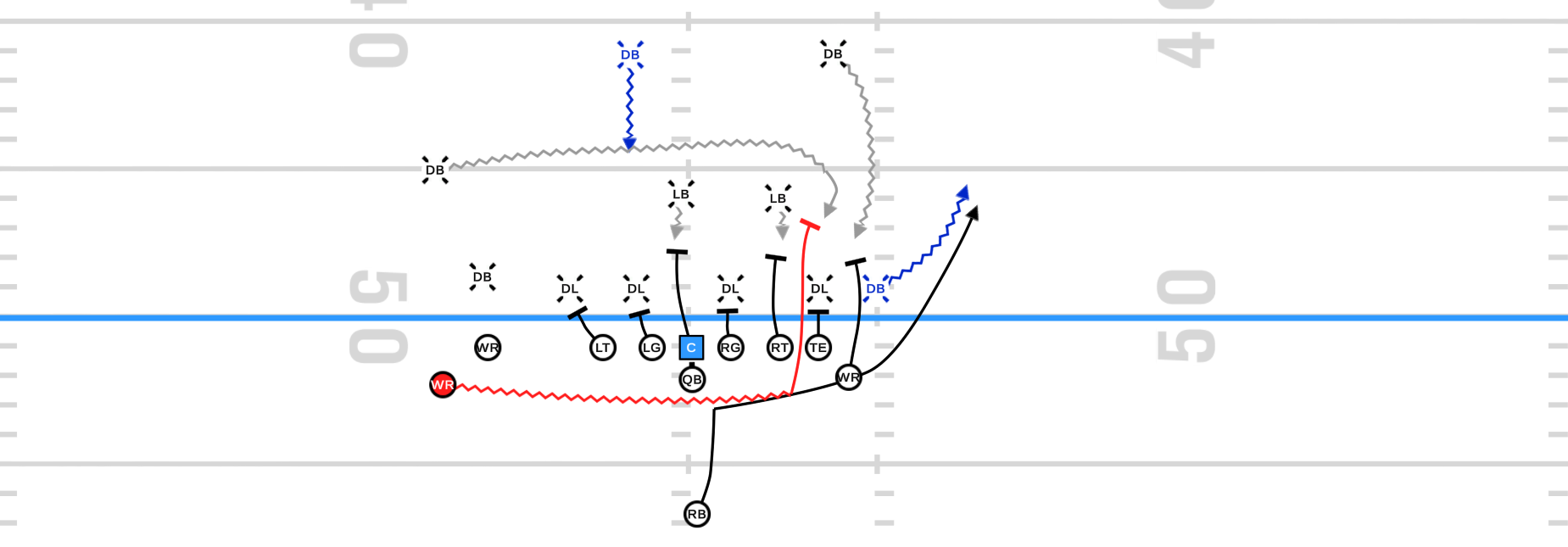2020 Week 11, vs Denver Broncos
In this writeup, we are taking a look at how Miami used their DBs in the run fit.
This is primarily in their 3-3-5, with OLBs on the line presenting a 5man front and SS in the box to the strength with the Nickle close to the box on the backside. The only LB not on the LOS is the Mike.
This is not only snaps from this alignment. Also not all snaps in the game from this alignment.
Miami DBs have good impact when playing downhill between the tackles, getting to their gap, finding the ball carrier, and securing tackles. Miami's nose tackle in these plays also has very good impact.
Problems begin to arise when the ball carrier takes an outside path, with lead blockers taking on the edge.
See film cutups at the bottom of the page.
SOLID FITS
1.
Mike is making the Nose right, with nose playing either A gap. The nose shows his helmet to the left, forcing the ball carrier to the right and then shedding the Center and getting hands on the ball carrier.
The blitzing down safety to the strength meets the ball carrier in the hole, beating WR insert block to the inside.
2.
The Nickle to the backside plays patiently in the run, since the backside is fully gapped out and he is a +1. When the ball carrier heads to his side, the Nickle triggers down and meets the HB in the hole.
Like the prior play, the Nose is staying square on the Center and threatening both A gaps. Nose shows his helmet to the right in the strongside A gap, and after the ball carrier bounces to the backside A gap the Nose sheds his man and again gets to the ball carrier at the line.
3.
TE meant to come up off his playside double and pick up #21 misses his block. #21 makes the tackle at the line.
MISSED FITS
4.
Double fold blocks with the Center pull here gives a +1 to the playside for the offense. Due to the front, there are no defenders able to adjust to the center pull.
Down safety #21 following TE motion is the target of the Center pull, and does get kicked out of the picture leading to an explosive run.
5.
TE forces #44 to go under the block, taking him behind the ball carrier. #53 gets kicked wide.
Down safety #21 gets over the crack block untouched, but gets beaten to the sideline for an explosive run. CB to the playside stayed on the crack runner and did not replace the edge fast enough, also gets beat to the sideline.
6.
Denver pulls 3 blockers. Miami #44 and #21 would need to both gap down with pullers, but were both a step too slow. #44 misses
#29 to the strength gets kicked out wide on his blitz.
7.
Playside edge gets logged by pulling guard.
#29 meets pulling BST on the edge., and gets tossed to the ground.
While sound against interior runs, Miami did have some struggles this game with runs to the edge, thanks often to the mismatches their alignment and personnel created against pulling linemen. See film of these plays below.
